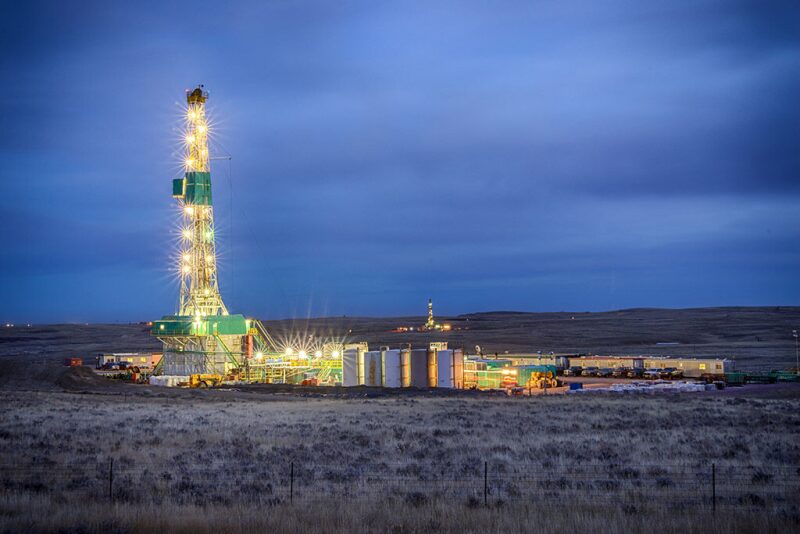Pore-to-process simulation concept refers to coupling all production system elements such as reservoir(s), wells, pipeline network, and facilities. The concept evaluates the impact of the subsurface geological structure uncertainties, wells, and pipeline network flow assurance issues and the surface facility constrains on the overall asset production. Pore-to-process simulation will enable several what-if scenarios evaluation, identify production bottlenecks, and optimize asset oil- and water-production rates.
The purpose of the concept is to maximize oilfield recovery, eliminate non-productive time, and increase profitability through the design and deployment of integrated workflows. This combines business process management with advanced information technology and engineering expertise to streamline and, in many cases, automate the execution of tasks performed by cross-functional teams (i.e., subsurface, engineering, and operation teams).
Therefore, implementation of an integrated workflow will provide immense value in terms of streamlining the link between people, processes, and technology, which will be translated into a faster (proactive) detection of operational and engineering problems and events, leading to suitable actions being taken in a timely manner.
The pore-to-process simulation is not a new concept to optimize a producing asset. It started in the early 90s, where reservoir engineers were able to couple the vertical flow performance curves using reservoir simulators to integrate wells models with subsurface simulation models. Recently, breakthroughs in hardware and software technologies have led to integration of more production system elements, including production pipeline network and facilities, to resolve many challenges that were impacting asset oil production and increasing water production.
The most important question that is always asked by asset managers is why integration of all production system elements matter. To answer this question, let’s analyze the production system elements challenges and the impact of these challenges on the overall asset production.
Challenges
As Fig. 1 shows, each of the production system element has several unique challenges that could impact the whole production system. The reservoir challenges include the reservoir pressure depletion, waterflooding inefficiencies, early water breakthrough, and low recovery factor. The well challenges include liquid loading, perforation design, well completion design, and artificial-lift run-life. The pipeline network challenges include hydrates, wax and asphaltenes formation, production bottlenecking and slugging, surging, and pigging frequency. Lastly, the facility challenges include oil processing capacity, maximum water capacity, and equipment health monitoring.

Other minor challenges could be that the asset team members are working in silos. Several meetings are required to discuss data sharing, production targets, and constrains across different asset divisions.
The combined impact of all the above challenges would reduce the asset production efficiency, increase the chemical usage for managing the flow assurance issues, and increase Opex/Capex for managing and producing the asset.
To address the production system challenges, there is a need to integrate people, technology, and processes in an integrated workflow to couple the subsurface asset structure along with wells, pipeline network, and facility.
Solution
The pore-to-process simulation has two main approaches as shows in Fig. 2.
- Planning (long-term forecasting)
- Operations (short-term forecasting)

The planning approach focuses on subsurface and asset performance analysis for long-term forecasting. This includes coupling the dynamic subsurface model along with well and pipeline network. The objectives of the planning approach are as follows:
- Setting up development strategies (what-if scenarios)
- Configuring production system boundary conditions (pressure, rates, and fluid compositions)
- Identifying bottlenecks and flow assurance issues in wellbore and production network
- Evaluating morning gas rush / fast well recovery for gas reservoirs
The benefits and impact of the planning approach are reducing subsurface uncertainties, evaluating several development scenarios, identifying flow assurance problems using heat maps as shown in Fig. 3, maximizing oil production potential and curtailing water cut, and optimizing Capex and Opex.

On the other hand, the operations approach is focusing on pipeline network and facilities for short-term forecasting. This will support both dynamic and steady-state analysis by utilizing the current boundary condition from the wellhead (pressure, rates, and fluid composition) to address day-to-day operation problems for pipeline network and facilities. The objectives of the operations approach are simulating downstream facilities such as flaring system and distribution lines, accurate thermodynamic modeling for consistent fluid behavior simulation (chemical injection, CO2 prediction, waxes, etc.), addressing facilities backpressure/bottlenecks, gas sweeting performance, and facility utilities consumption.
The benefits and impact of the operations approach are as follows:
- Reducing emissions from flaring, vents, and liquid storage and transportation
- Minimizing utility consumption in the plant (i.e., fuel gas, power, cooling water, or steam)
- Planning optimal equipment scheduling for operations such as pigging, catalyst change out, or cleaning maintenance
Conclusion
In summary, the pore-to-process simulation is an integrated asset model workflow representing different types of numerical models. These models are linked together and share boundary conditions/constraints in a single simulation environment and provide a more complete picture of expected behavior of each production element.
There are several technology platforms available in the market to perform pore-to-process simulation, however, the fundamental differences between them are in their ability to perform the simulation faster, map boundary conditions accurately, and include the economic evaluation in the analysis.
References
Afifi, Mostafa. 2019. “The integrated pore to process simulation.” Presented at Kuwait Oil and Gas Show and Conference, September.
Desai, S., Al Jadi, I., Al-Ghanim, W., Franco, F. M., et.al. 2019. "An Integrated Wells to Process Facility Model for Greater Burgan Oilfield." Paper presented at the Abu Dhabi International Petroleum Exhibition & Conference, Abu Dhabi, UAE, November. doi: https://doi.org/10.2118/197361-MS
[This article is sourced by TWA editorial committee member Mohammad Rasheed Khan.]


